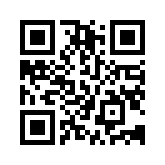How to do and what to look for when doing a home skin check
Early skin cancer detection is important for your health. Luckily most skin cancers are slow growers and can be removed just with surgery. However, early detection reduces the amount of surgery, the size of scars and risk of spreading to lymph nodes and other parts of the body.
Here’s a quick review of how to do a check and what to look for.
Strip down. To check our skin, we have to see our skin. Often people just check their face, but it is important to check all of your skin.
Find a friend or a mirror. The most common location for a man to have a melanoma is on his back. For women, the back of the legs is common. These are hard areas to see ourselves.
Step into the light. The older I get the more I find myself saying this when friends and family ask me to look at something. Patients often comment that they see a lot more while in the office than they do at home. It’s because our lights are really bright!
Take some pictures. It’s easier than ever to snap a digital picture of anything that catches your eye. Then recheck it on a monthly basis to see if it is persistent and/or making any big changes.
Once you’re ready. Here’s some very big generalizations.
Soft and squishy is usually fine. This usually includes skin tags, old moles and neurofibromas.
Bright red dots are fine. These are usually cherry angioma.
Brown and scaly or crusty is usually fine. These growths are usually benign seborrheic keratoses.
Worry about anything that is growing fast, bleeding, itching or painful.
Most melanomas are flat brown growths that are totally asymptomatic, so it is important to actually look for these. Look for the ABCDEs – Asymmetry, Irregular Border, Multiple Colors, Diameter bigger than a pencil eraser and Evolving.
Although these are big generalizations, they are what I try to teach my patients in the office. Many of them have become quite good dermatologists!
Become an expert of your own skin and you will be your best advocate and asset for early detection for yourself and your loved ones.
If you know someone who may find this article helpful, please share it with them! Follow us on social media this week, and subscribe to our growing YouTube channel! If you would like to receive these posts in your email inbox, Subscribe to our Site.
